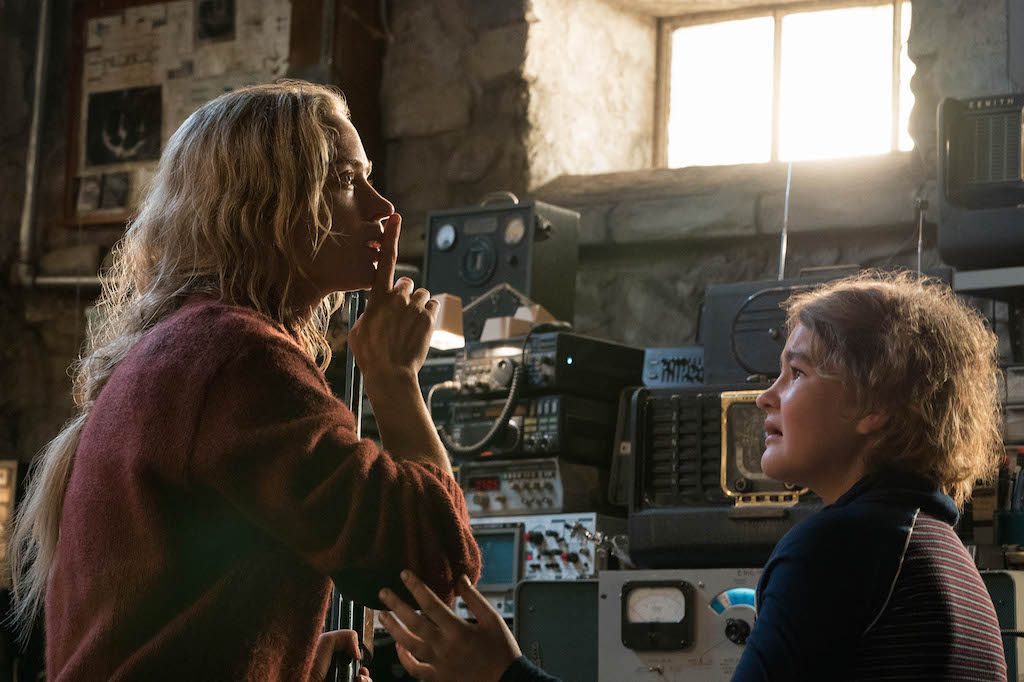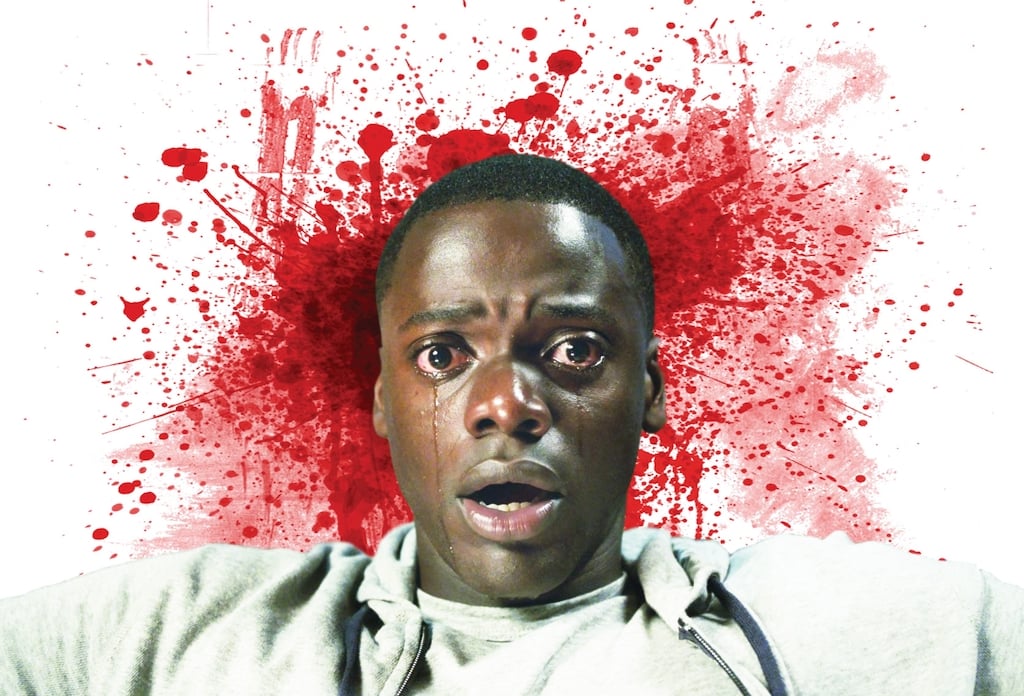‘A Quiet Place’ Might Be The Best And Most Important Horror Movie Of 2018
The best horror movie since 'Get Out' has arrived.

There’s a scene in A Quiet Place where Emily Blunt’s character crouches, in intense pain, next to a monster that will sense and kill her if she makes a single sound. She is bleeding from several gruesome injuries, her body shaking, her fist jammed in her mouth to muffle involuntary noises.
In a packed cinema last week, the entire audience was doing the same thing — hands over or in mouths, limbs hugged close, remaining very still and quiet. The film is eerily silent; if anyone in the cinema screams, sobs, or even sniffs loudly, they’ll be heard.
Watching A Quiet Place was the most stressful cinema experience of my life, because the entire film is like this. The new indie horror flick, directed by John Krasinski (of The Office fame), is almost entirely devoid of sound, because sound is how the monster gets you. And if that sounds tacky or trite to you, too bad, because there’s no room here for a chuckle or a whispered comment to a friend, or even for a snack: every sound you make is uncomfortably loud, and feels like it could get you killed.
It’s a good thing, then, that this film is not at all tacky — it’s really, really good. Somehow, a low-budget horror film written by two unknown screenwriters, starring and directed by a guy known for his work on sitcoms, managed to be not just good but great, a possible contender for one of the best films of 2018.
Horror Without All The Garbage
A Quiet Place feels like someone sat down to carefully consider what is absolutely essential to a horror film, then kept that and jettisoned the rest.
There is next to no dialogue in this film — the original script had only a single line — and very little sound too. There are relatively few gory deaths, nor are there any cringeworthy moments of exposition, where characters outline a theory about how to kill/defeat/escape whatever monster/killer/nebulous force is currently troubling them. You can count the number of screams on one hand.
When you strip all that away, it turns out you’re left with the necessary space to make a story both terrifying and moving. The film centres on a family whose love for one another is palpable. John Krasinski and Emily Blunt make a compelling couple both on and off screen, and manage to convey love, fear, hope, anxiety and parental protectiveness without saying a word.
The kids are equally talented — Noah Jupe and Millicent Simmonds are both names to remember. All of the actors in this film are great, and the script just gets out of their way, drawing attention instead to the nuance of their expression, to how much meaning they can pack into small, quiet movements.
The film is peppered with other, smaller moments of innovation, too. Fireworks and children’s toys become ominous, while the horror film trope of a bloodied hand pressed against a fogged window becomes hopeful, even optimistic. Something as benign as a pile of grain becomes one of the film’s biggest threats. As a director, Krasinski seems to consider every B-movie trope and consider whether it can be discarded or upgraded, and the result is artful.

Deafness As Power
Of course, the family do communicate in this film, and they do it with American Sign Language (ASL). The daughter character is deaf, and it’s implied that her deafness and (therefore the whole family knowing ASL) is a pretty key reason that they are among the very few survivors of the monster attack.
All of this could very easily have just become a gimmick, or plot device, but A Quiet Place plays it differently. In a rare move for mainstream film, Millicent Simmonds, the actress who plays the deaf character, is also deaf — Krasinski said it was “non-negotiable” that a deaf actor get the part.
Simmonds helped teach her fellow cast-members ASL on set, and when they sign on screen it’s an honest representation of the capacity of sign language for emotion, nuance, tenderness, urgency and complexity. For many viewers, this will be their first actual encounter with sign language beyond the occasional interpreter at an event, and it matters that it’s one brought to them by an actual user of the language, someone is already using the platform the film gave her to urge more people to learn it.
Simmonds’ character’s deafness plays other, complex roles in the film — sometimes a danger to her when she can’t hear noise that might attract monsters, other times an extraordinary asset. As a hearing person, it’s not for me to make a call about whether the film’s representation of deaf people nails it, but it’s certainly new, and extraordinarily welcome, to see a young deaf girl cast as a complex, nuanced hero.
It’s especially surprising to see this in, of all things, a horror film. Then again, horror of late has been a source of outstanding, boundary-pushing cinema — see the slew of award nominations for Get Out, for instance. A Quiet Place is nothing like Get Out, to be sure, and innovates in totally different areas, but both are signs that horror, perhaps, is willing to start going where mainstream cinema is still too scared to.
A Quiet Place is out in cinemas now. We highly recommend you see it there.
